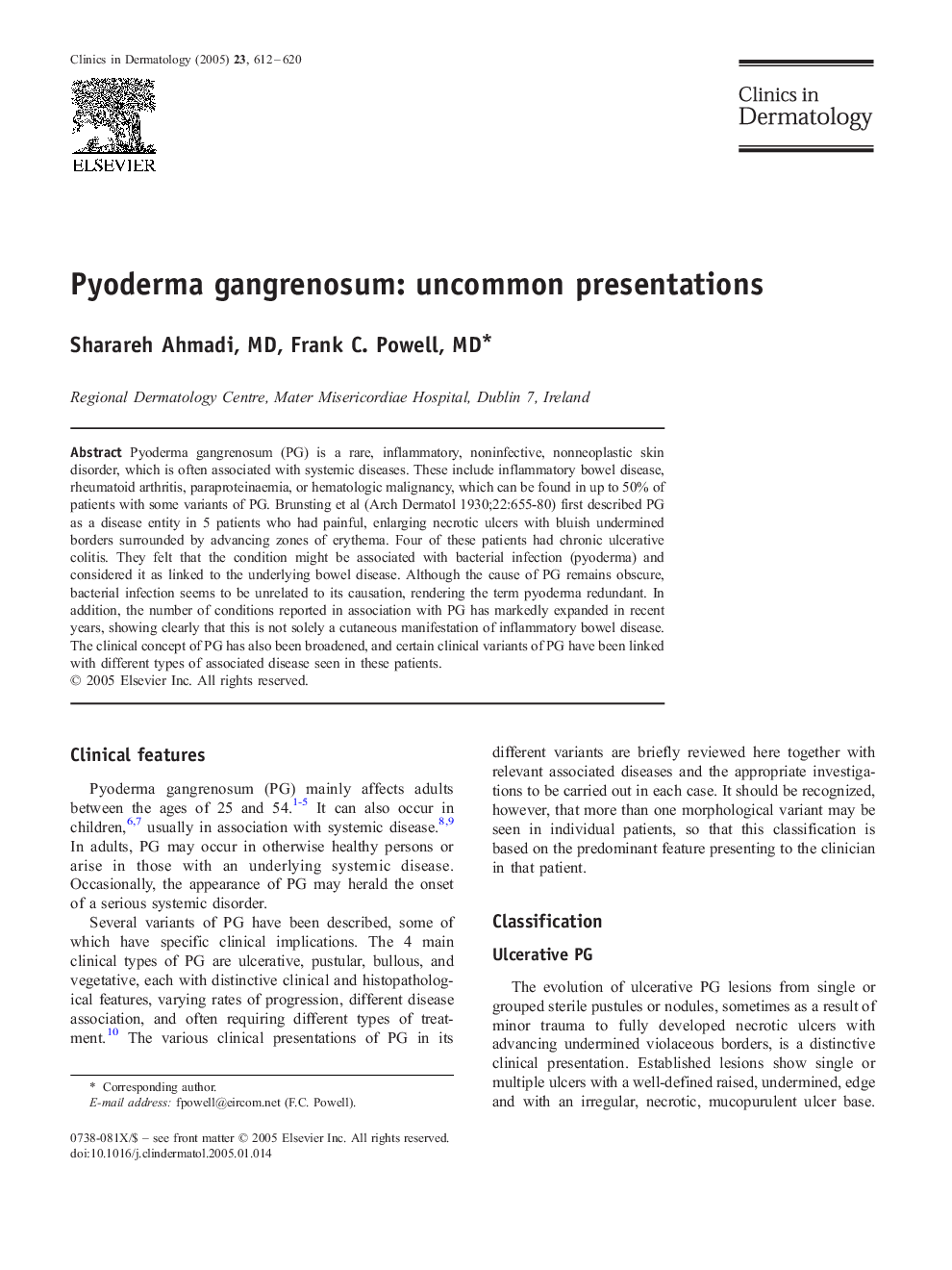| Article ID | Journal | Published Year | Pages | File Type |
|---|---|---|---|---|
| 9224480 | Clinics in Dermatology | 2005 | 9 Pages |
Abstract
Pyoderma gangrenosum (PG) is a rare, inflammatory, noninfective, nonneoplastic skin disorder, which is often associated with systemic diseases. These include inflammatory bowel disease, rheumatoid arthritis, paraproteinaemia, or hematologic malignancy, which can be found in up to 50% of patients with some variants of PG. Brunsting et al (Arch Dermatol 1930;22:655-80) first described PG as a disease entity in 5 patients who had painful, enlarging necrotic ulcers with bluish undermined borders surrounded by advancing zones of erythema. Four of these patients had chronic ulcerative colitis. They felt that the condition might be associated with bacterial infection (pyoderma) and considered it as linked to the underlying bowel disease. Although the cause of PG remains obscure, bacterial infection seems to be unrelated to its causation, rendering the term pyoderma redundant. In addition, the number of conditions reported in association with PG has markedly expanded in recent years, showing clearly that this is not solely a cutaneous manifestation of inflammatory bowel disease. The clinical concept of PG has also been broadened, and certain clinical variants of PG have been linked with different types of associated disease seen in these patients.
Related Topics
Health Sciences
Medicine and Dentistry
Dermatology
Authors
Sharareh MD, Frank C. MD,
